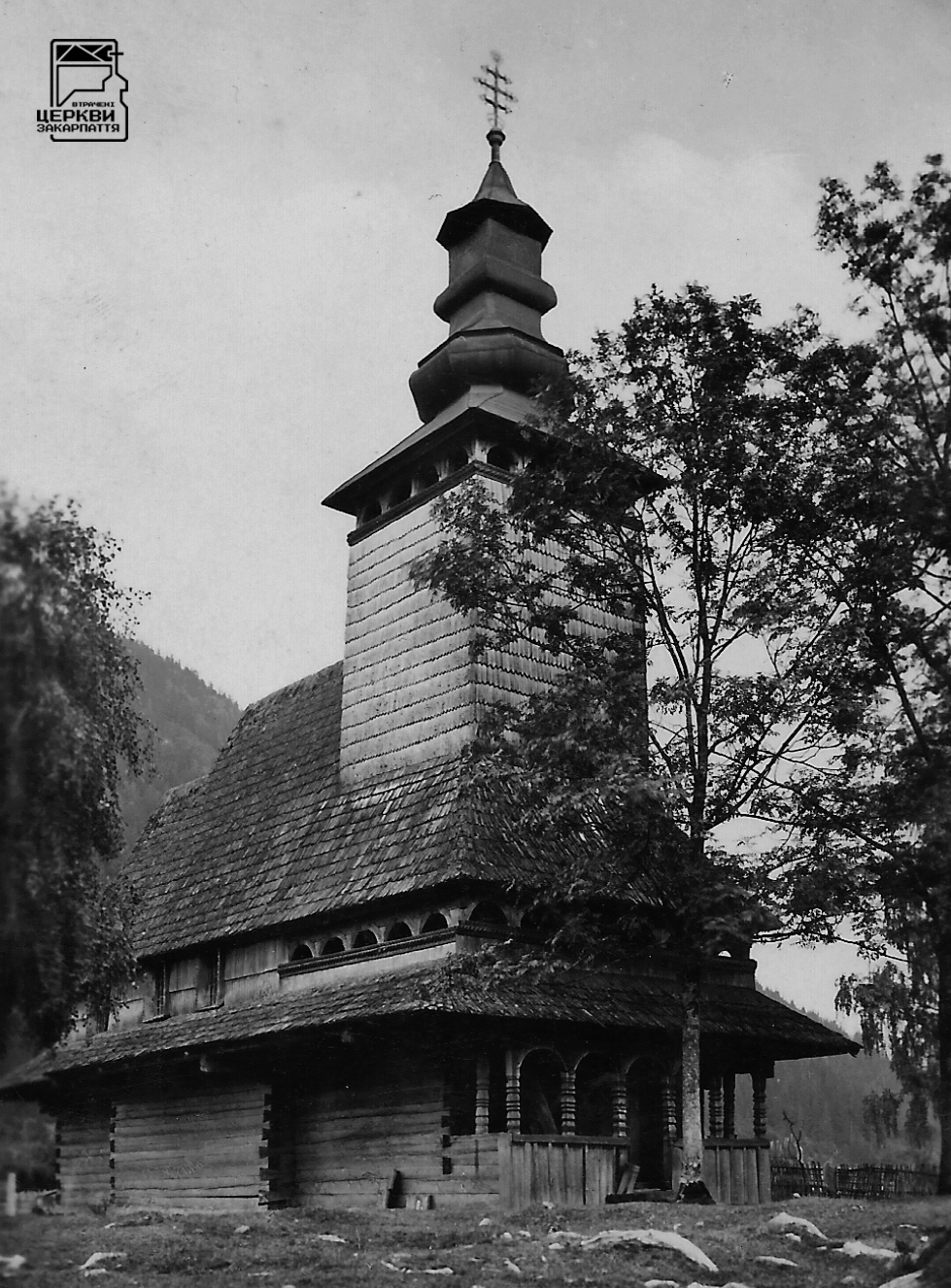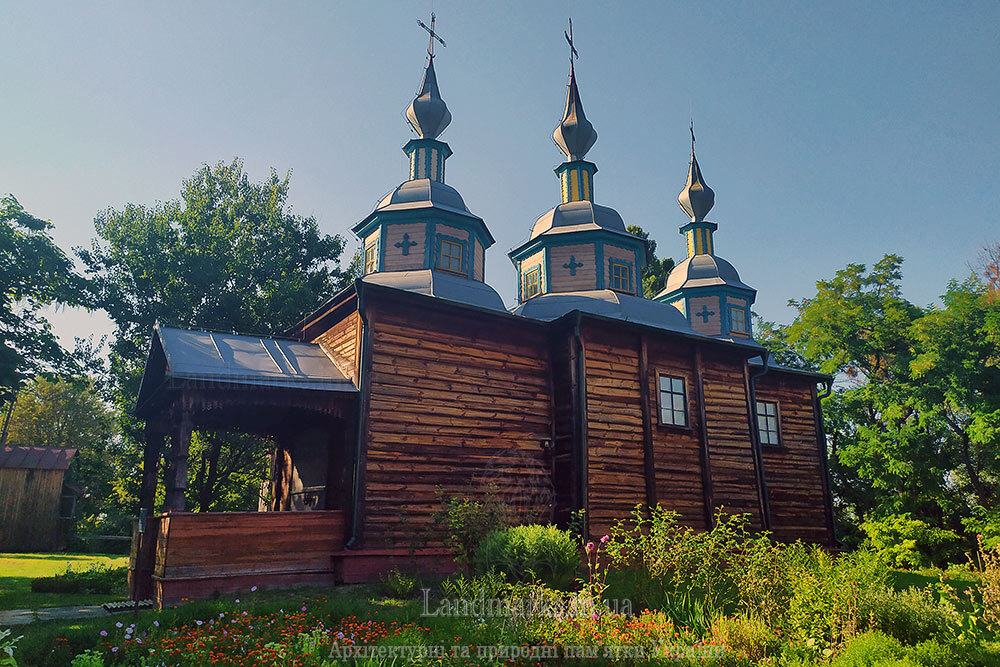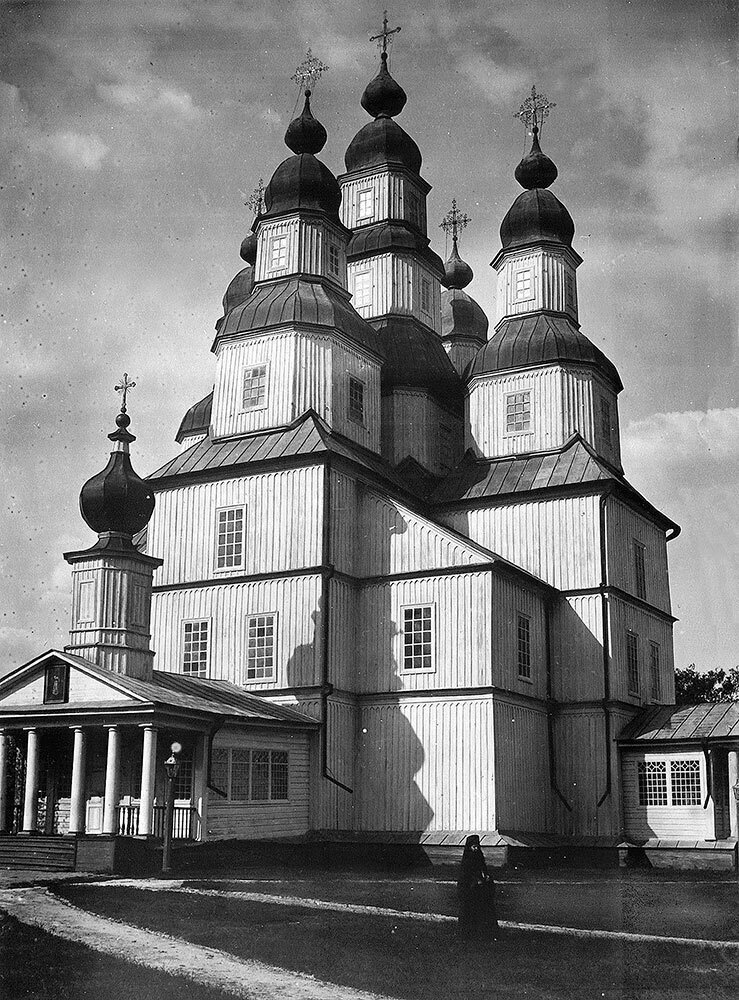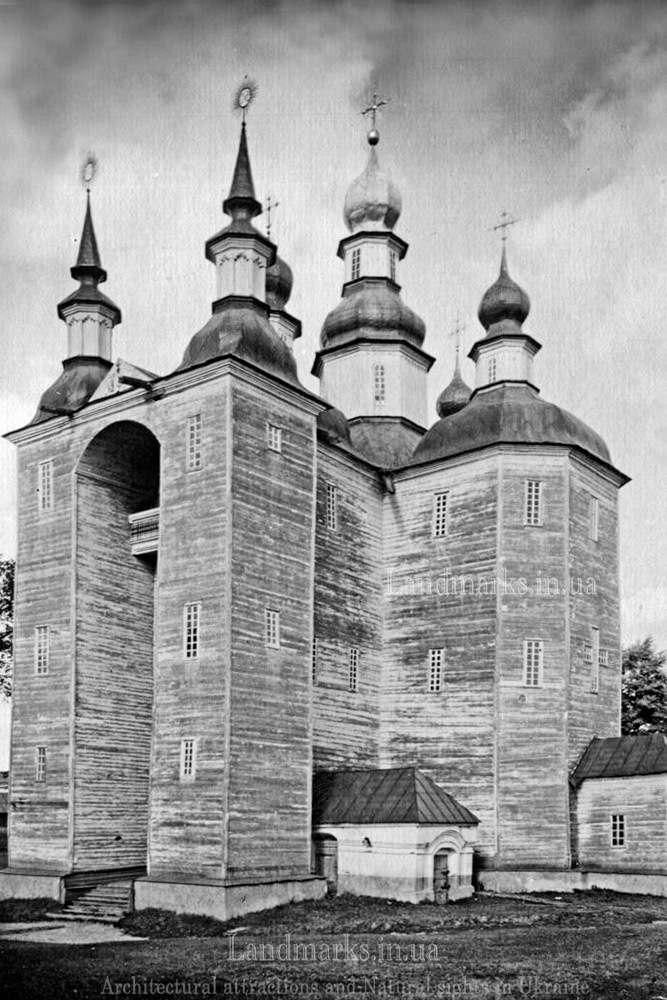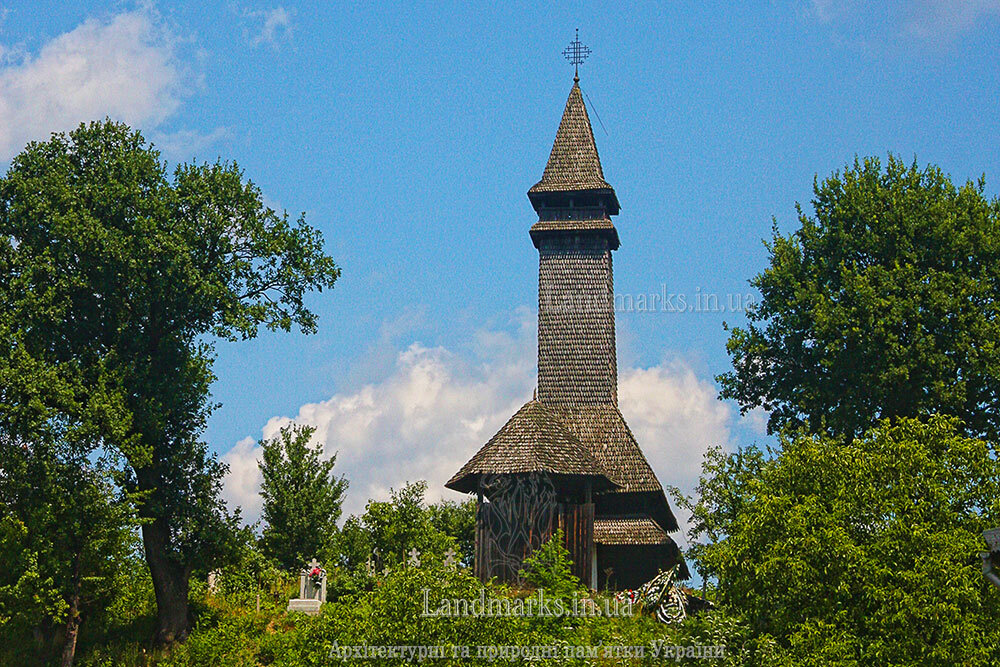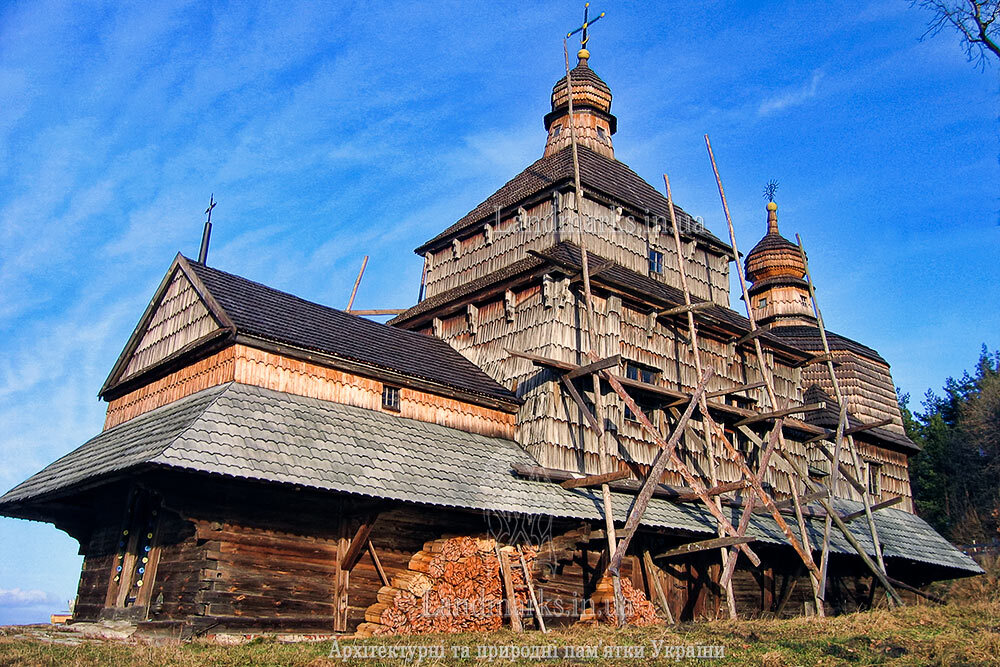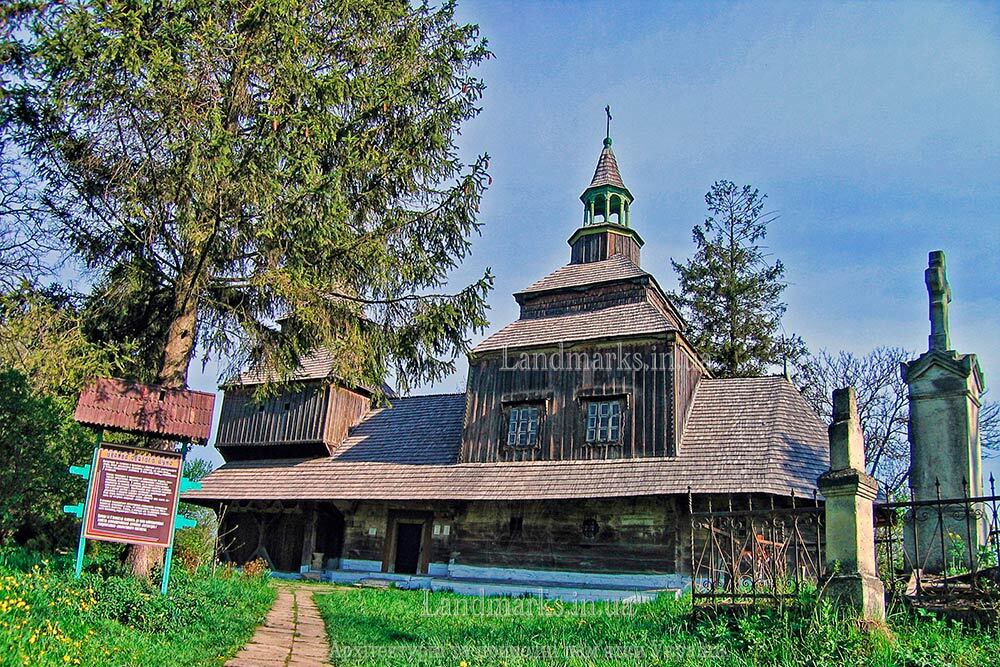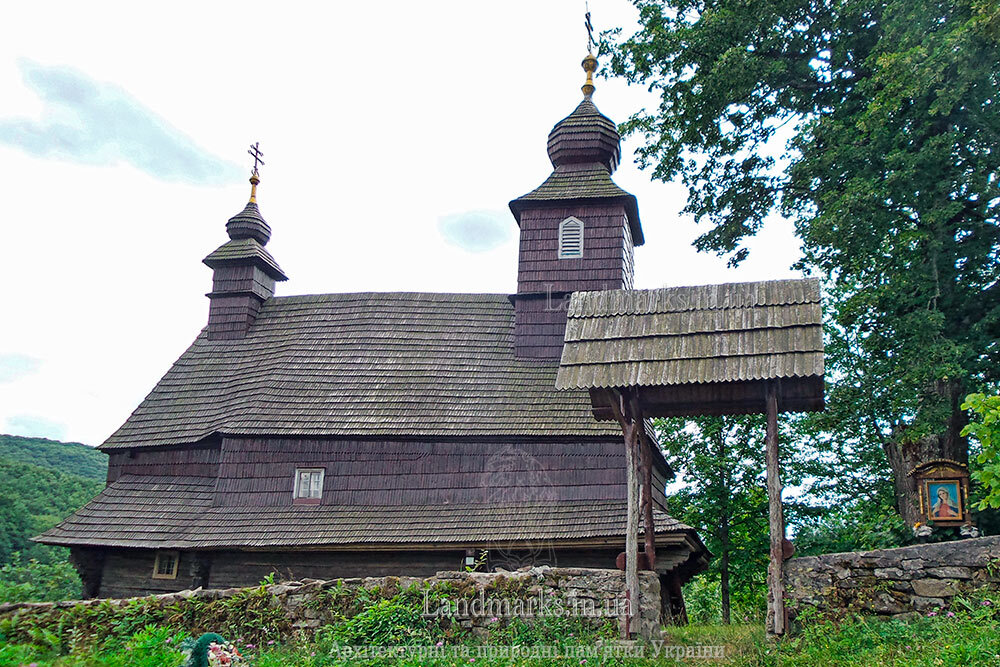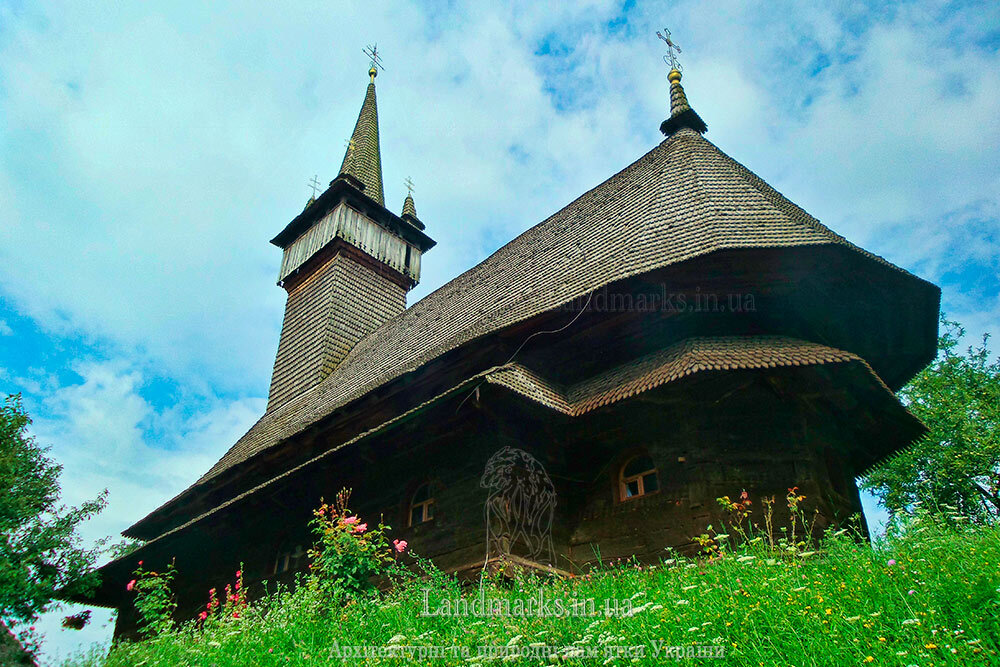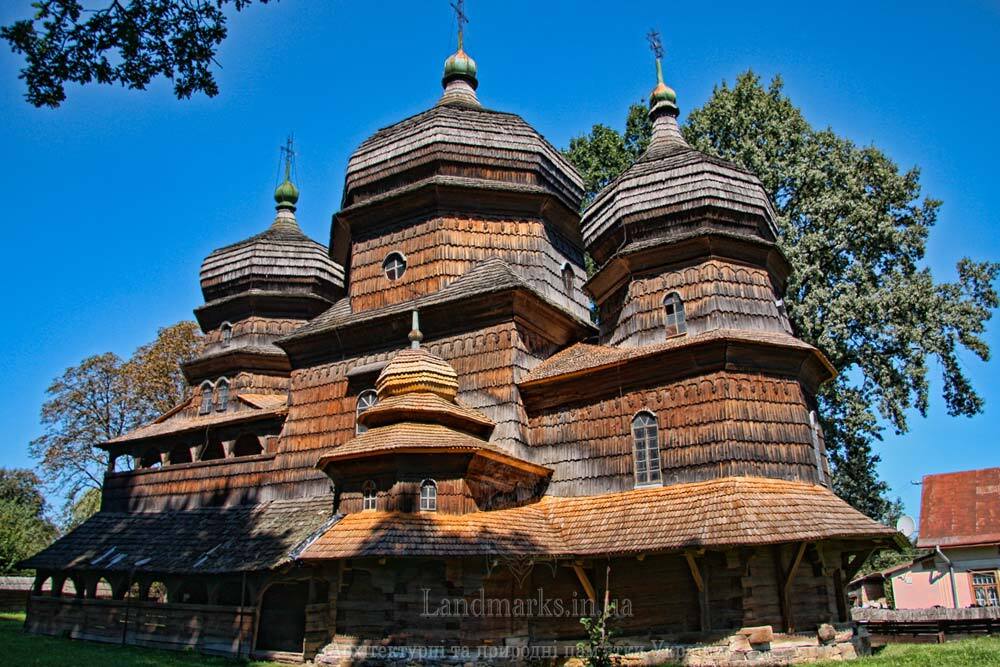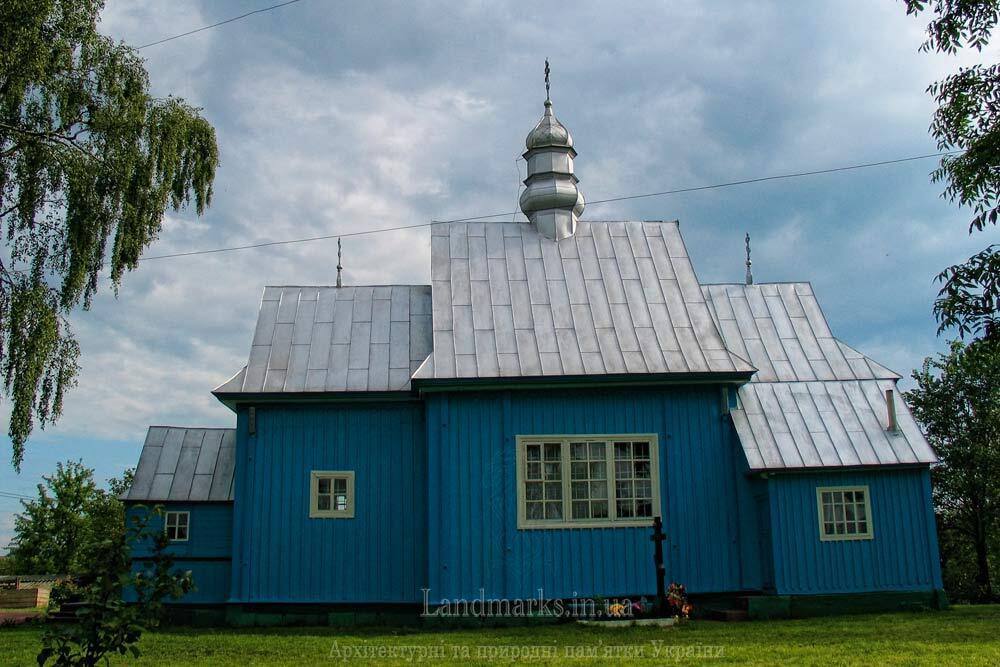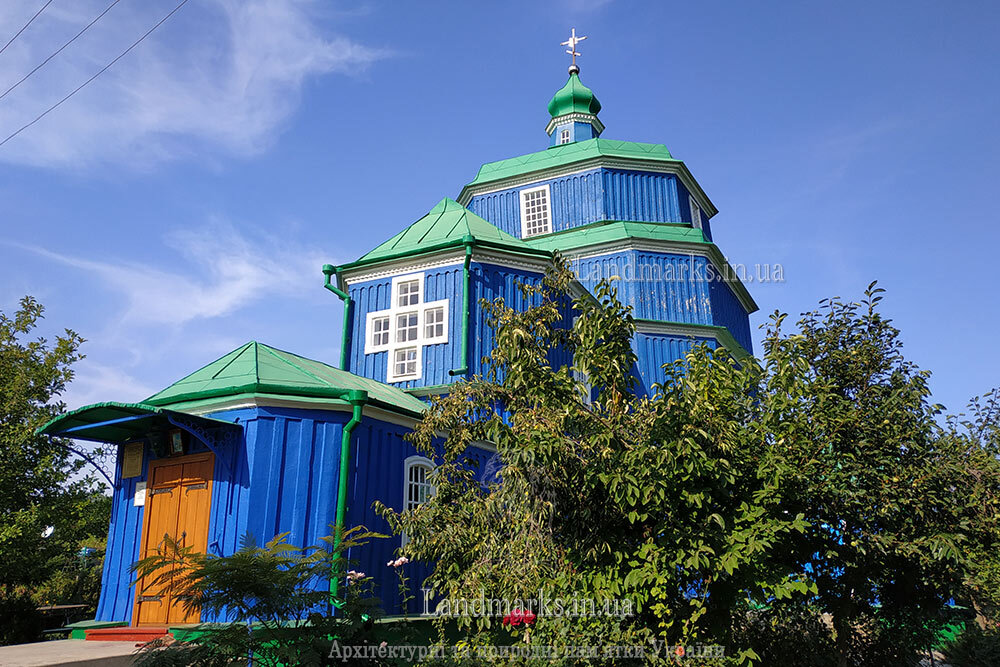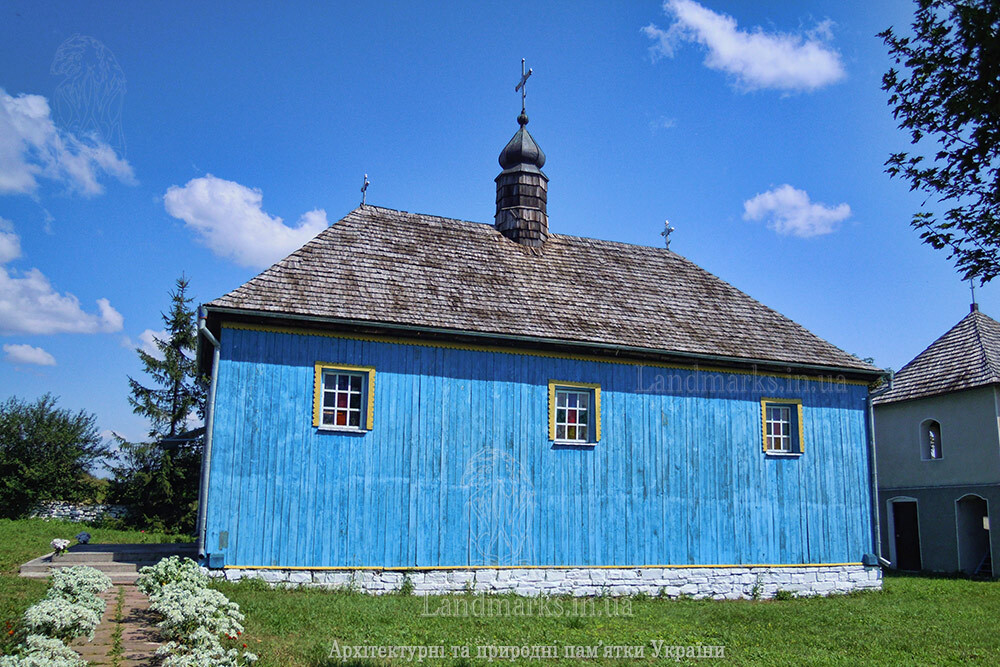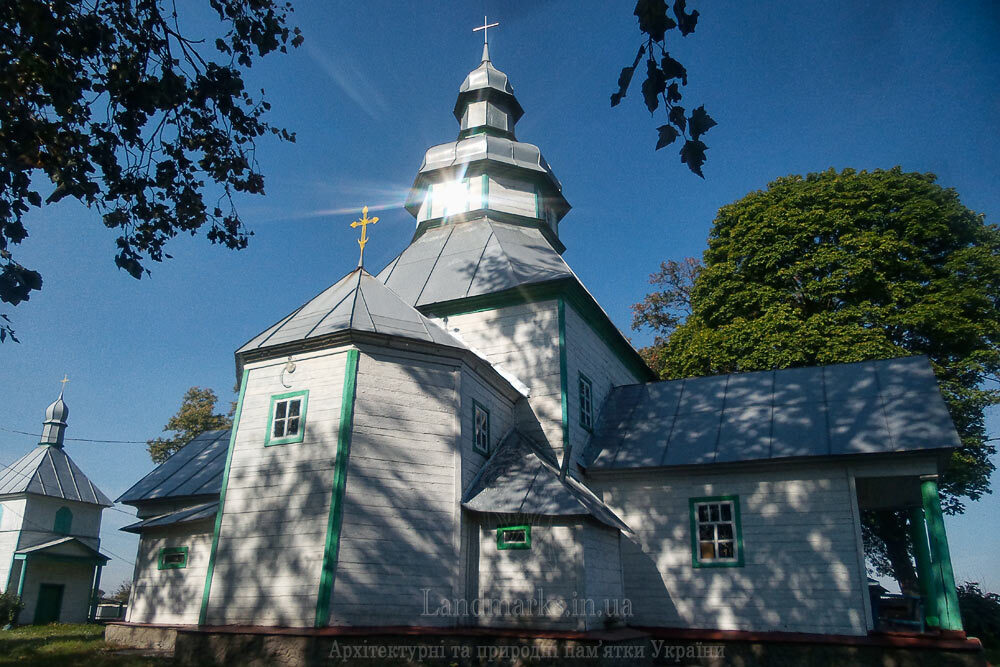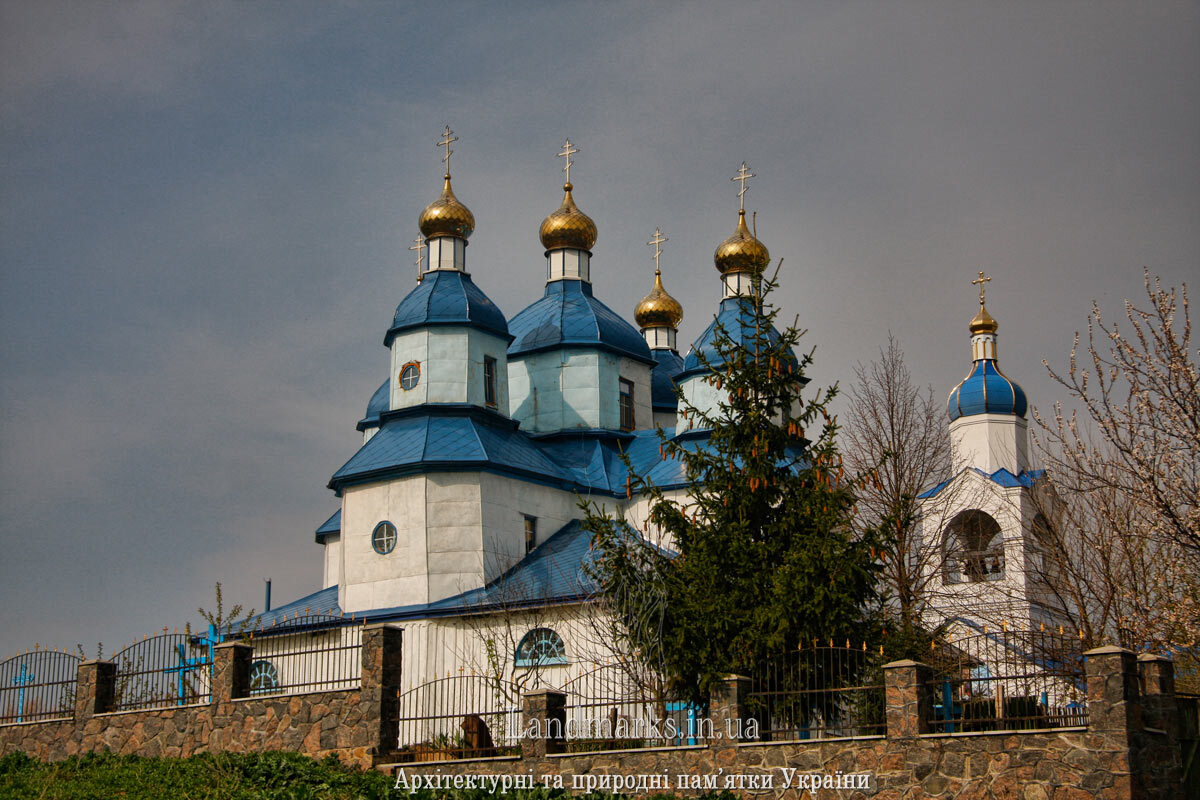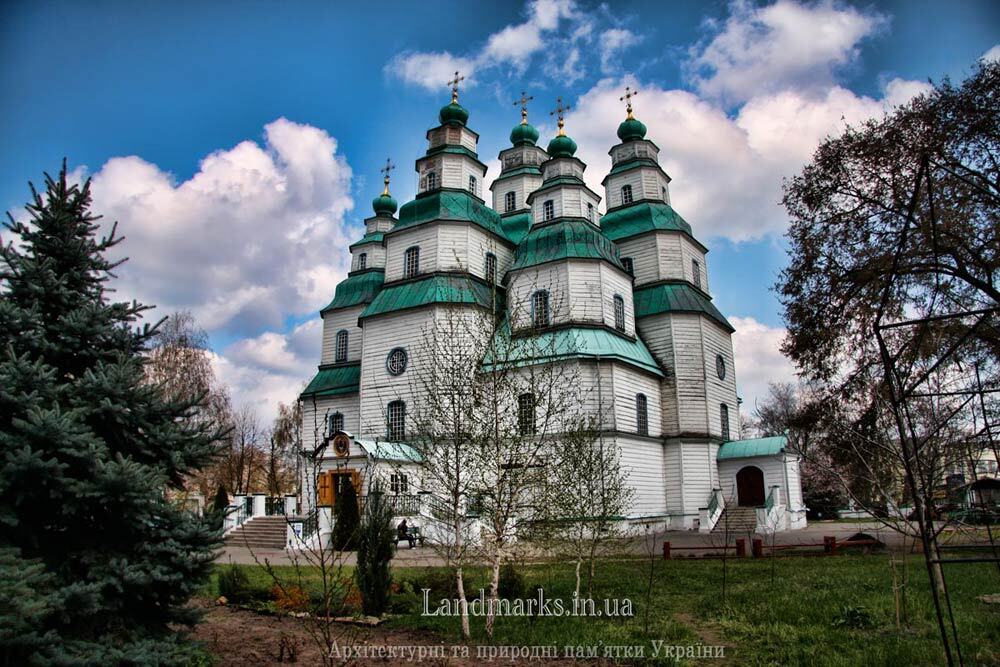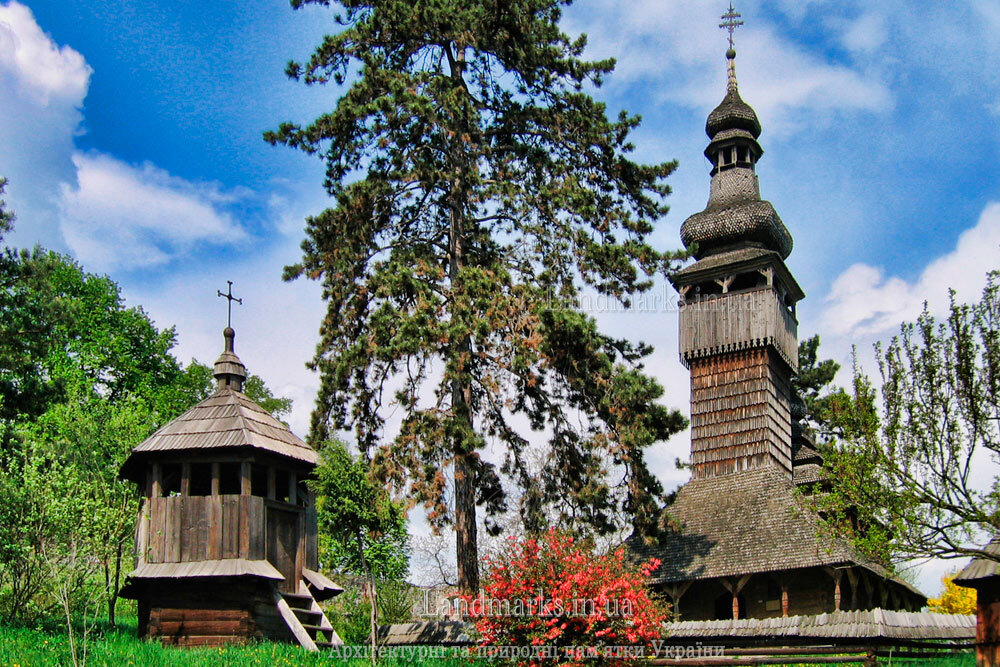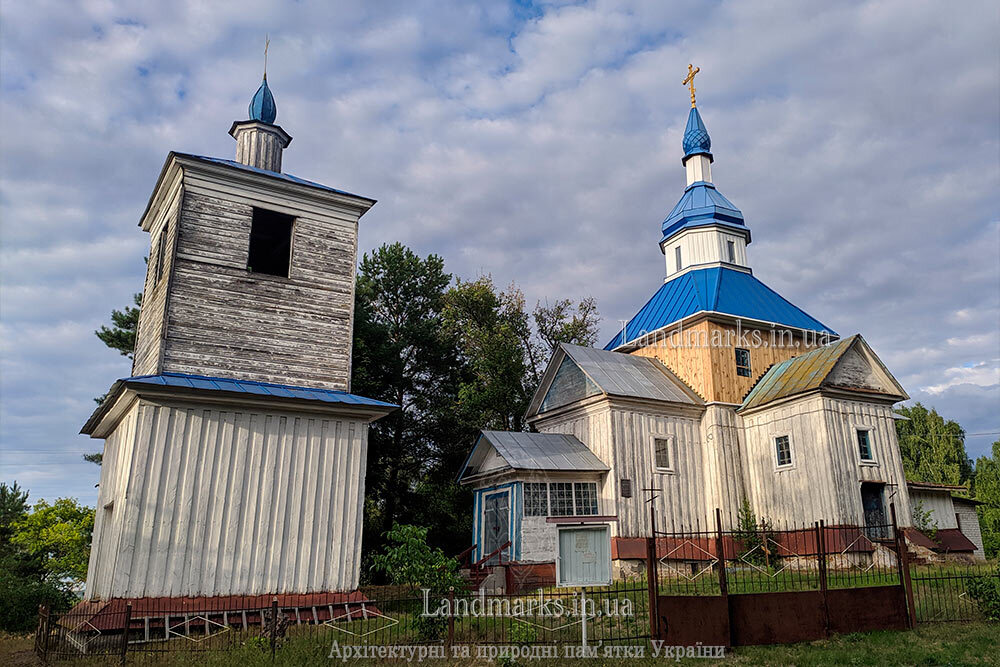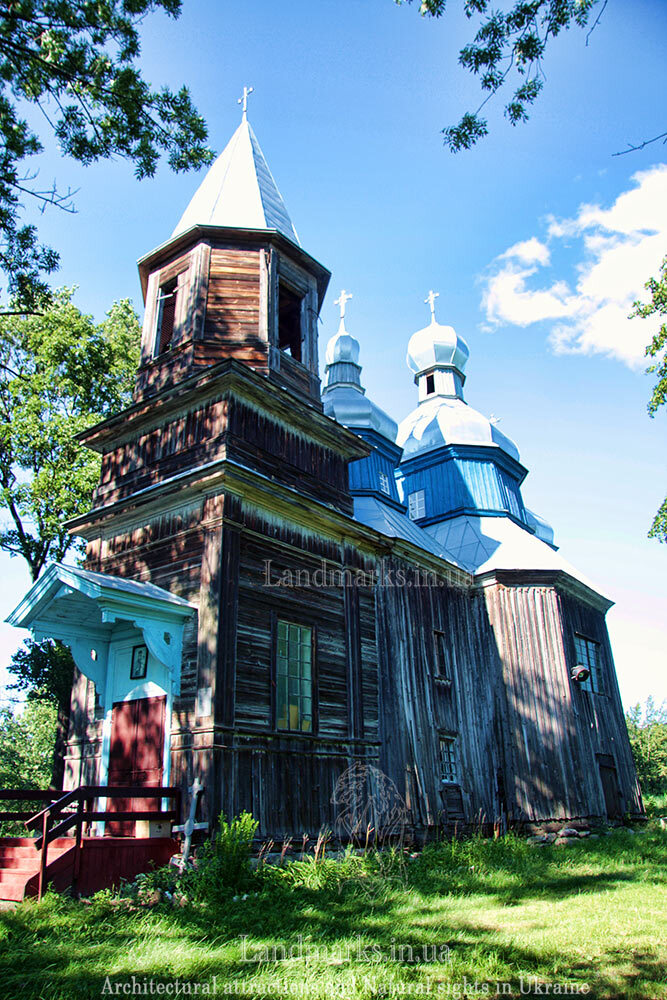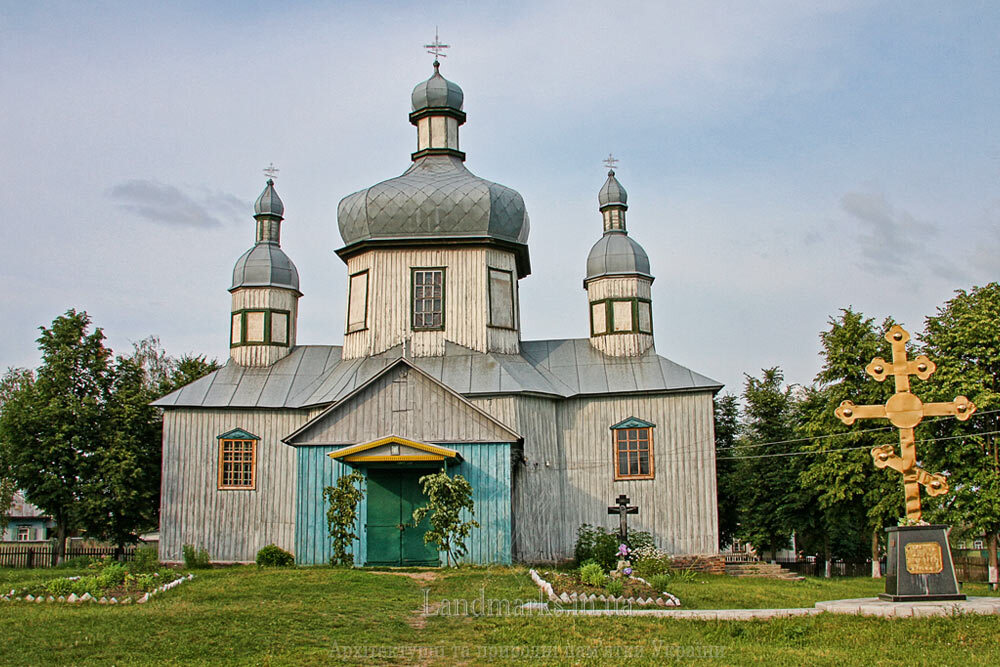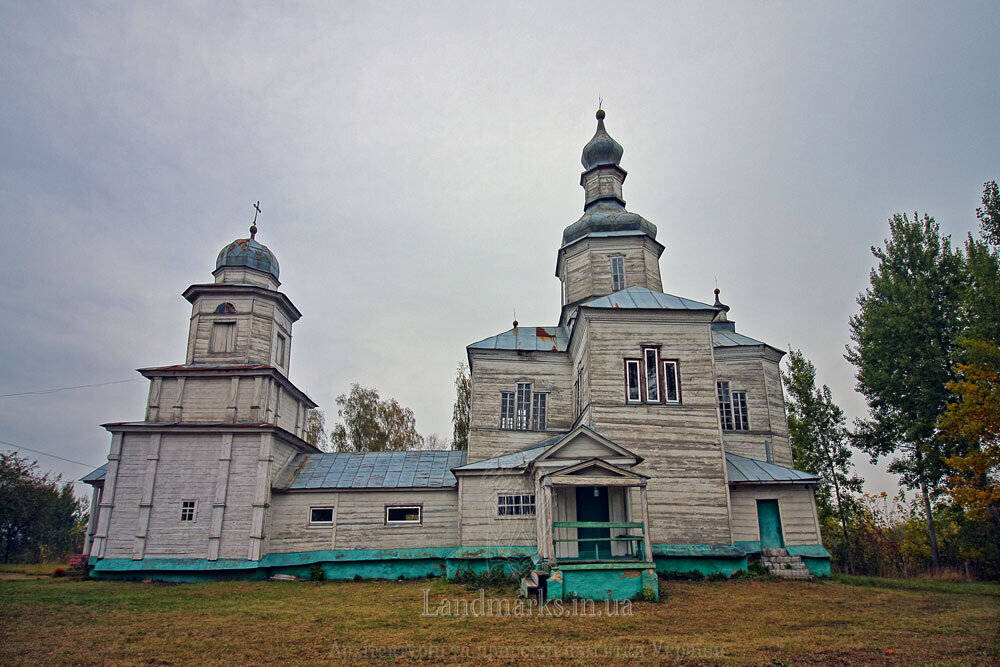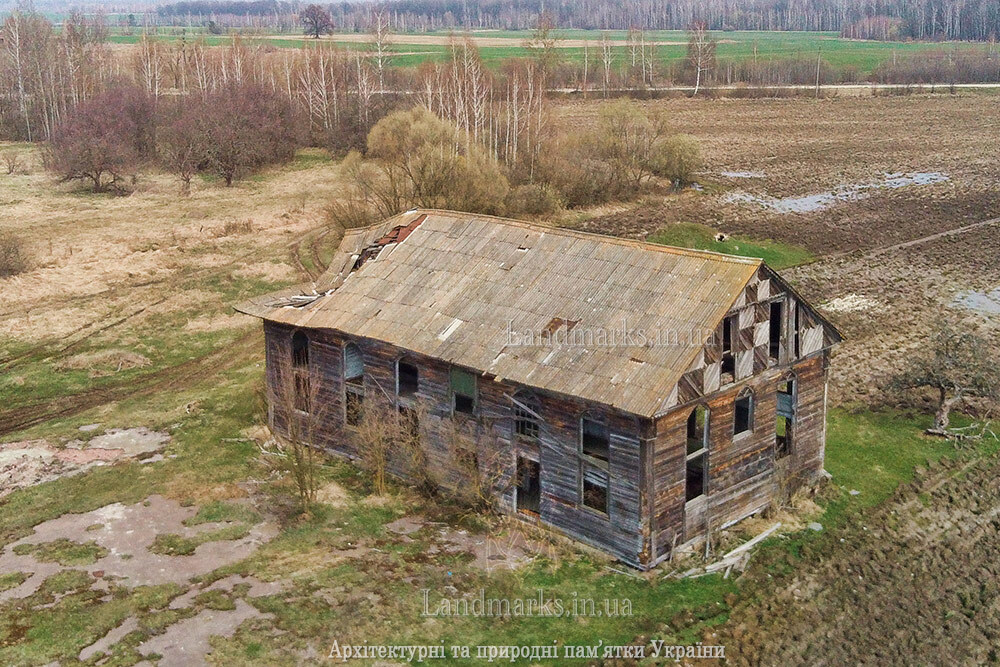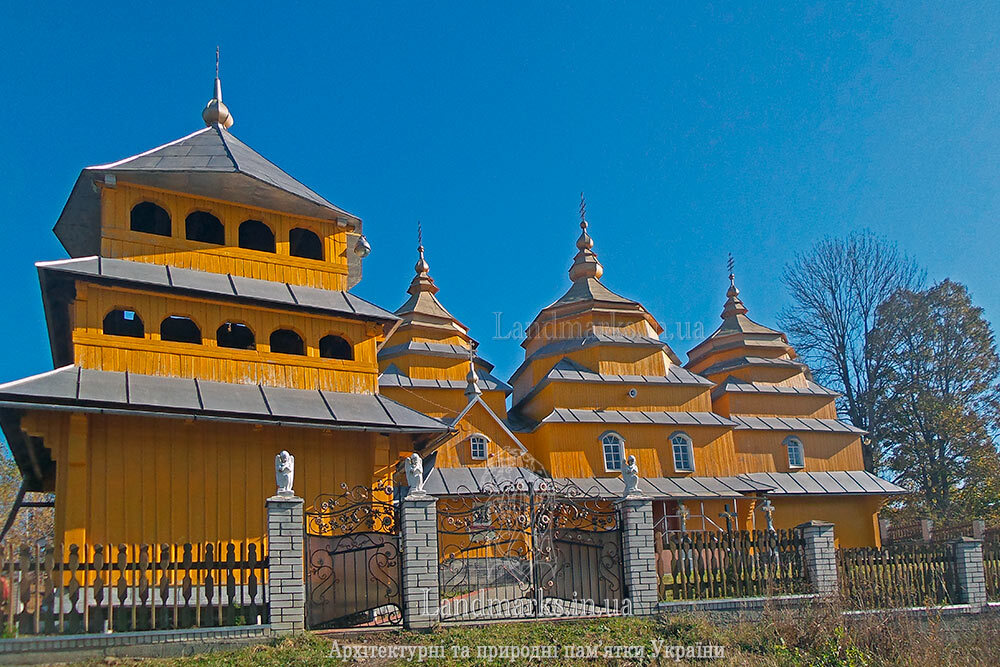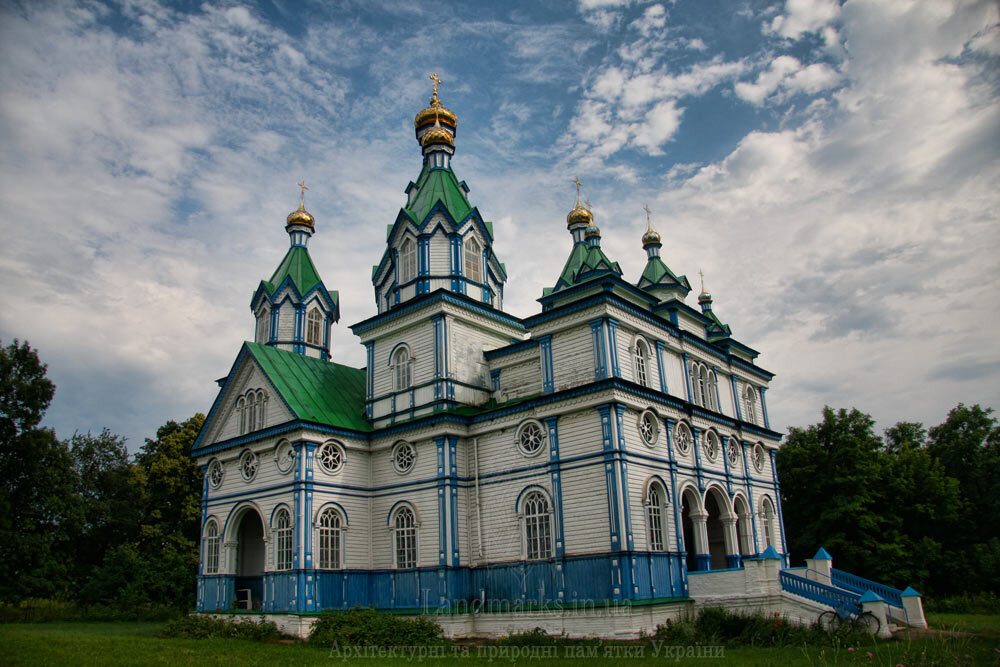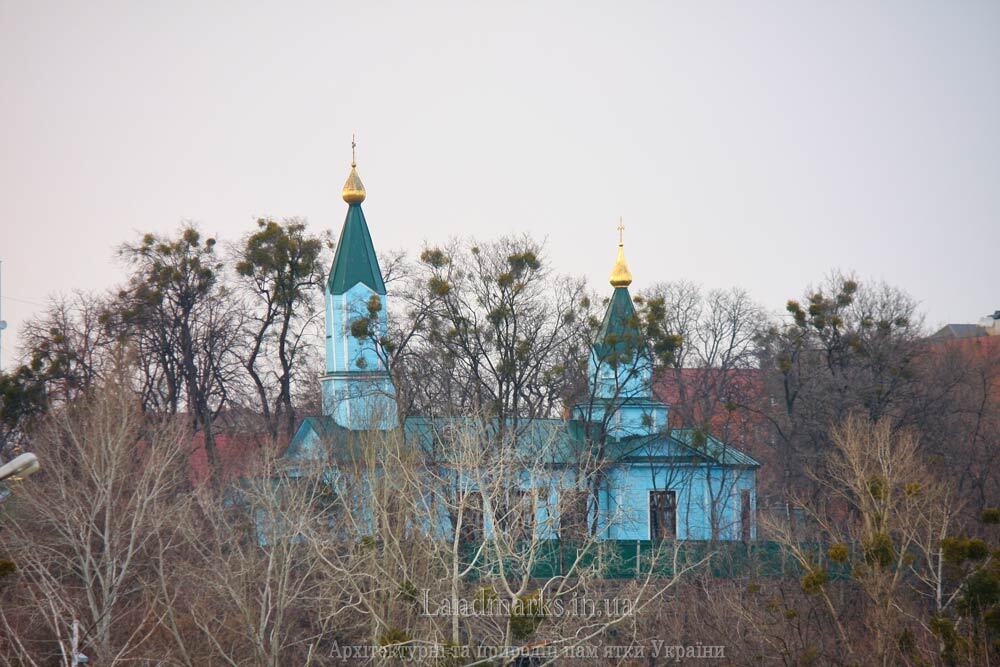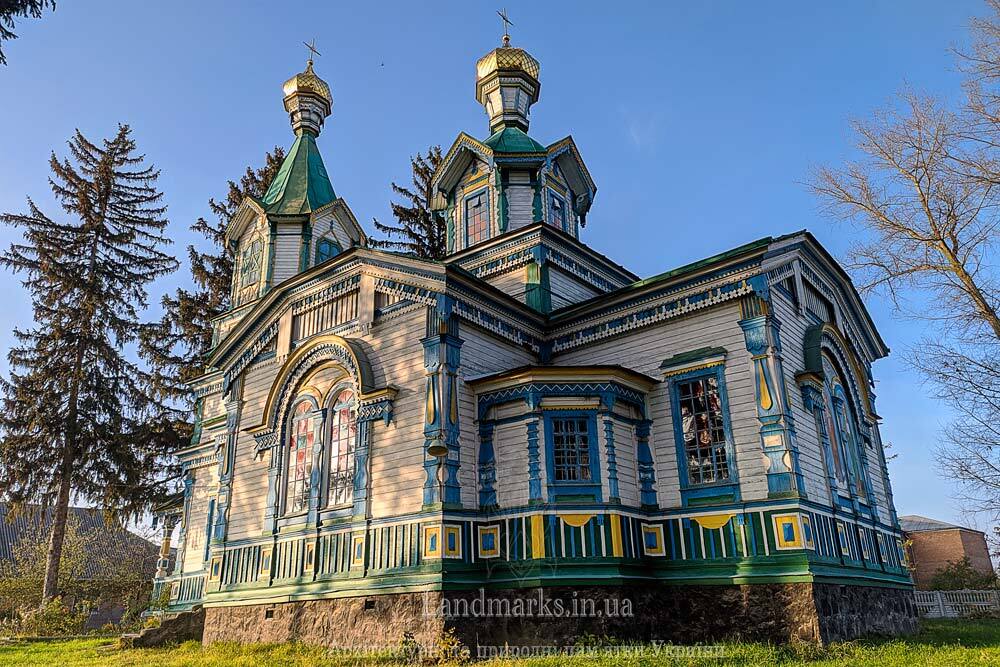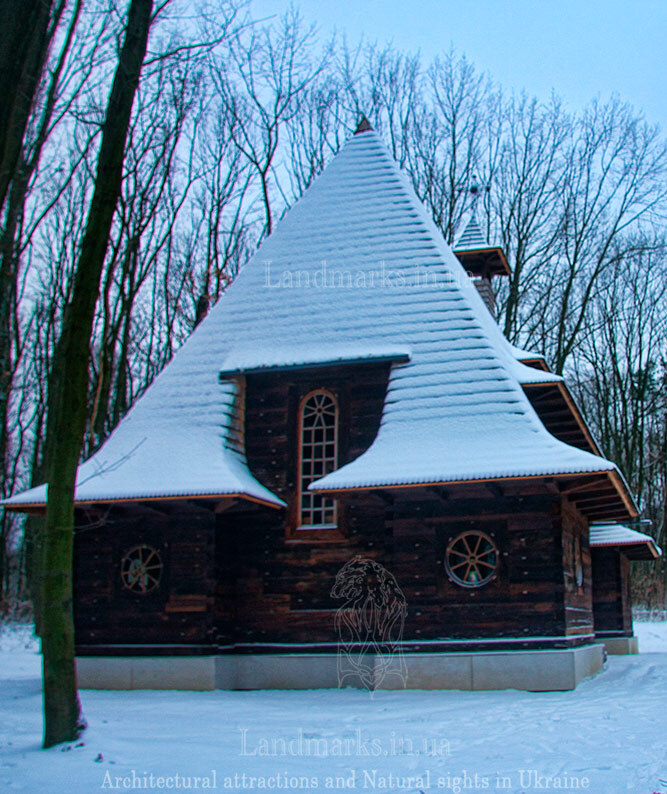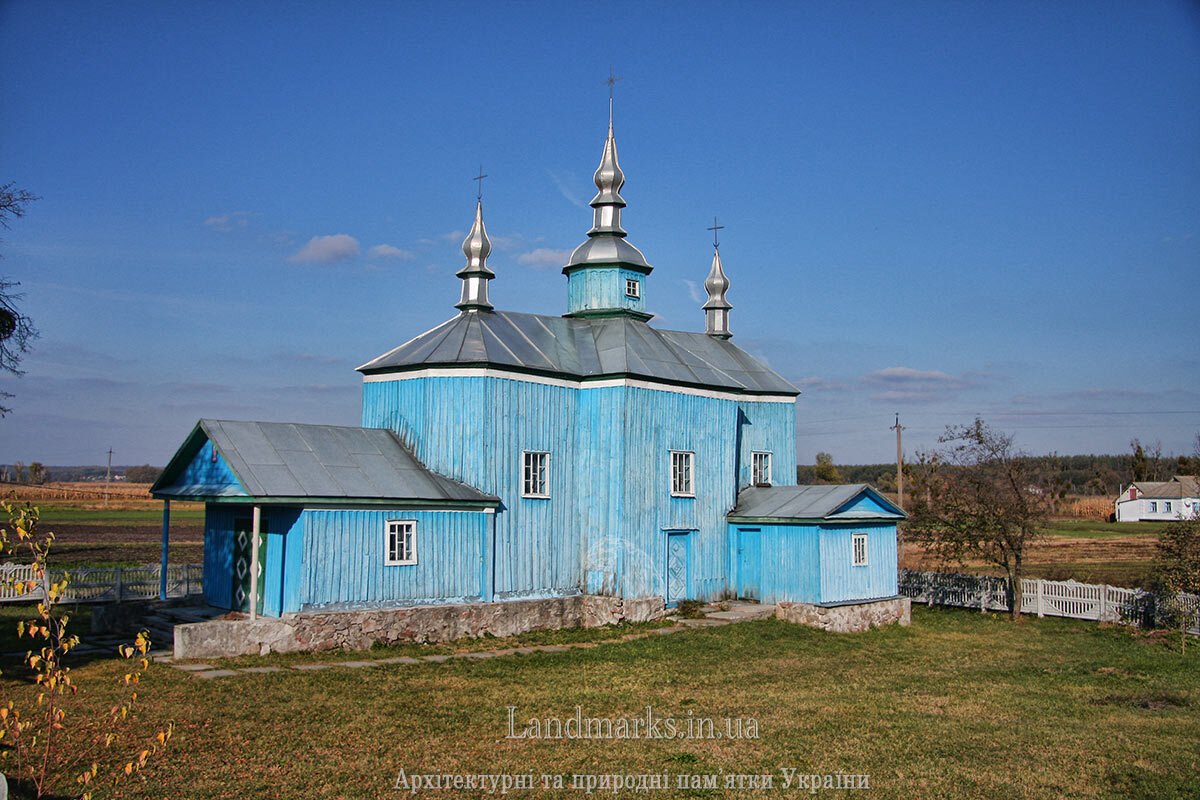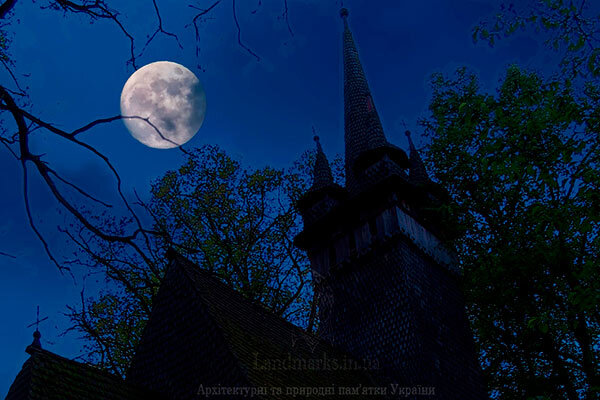Wooden churches represent a special part of Ukraine's architectural and cultural heritage. Just as in the rest of the world, where nature did not spare the creation of forests, so in Ukraine wooden churches have been built since ancient times. And the logic behind this is that wood was one of the most convenient, cheapest, and favorite materials for construction, and the speed of building a church also played a significant role. Well, in nowadays we can also see the construction of new modern wooden churches.
Wood is a unique material, it reminds us about life, about the passage of time, it reminds us of the warmth of the home. Although strong, wood is so fragile and vulnerable to the elements and human interference. But it is under the hands of woodworkers that real masterpieces are born.
Wooden architecture in Ukraine is directly related to the construction of wooden churches. On the territory of Ukraine, the first attested Christian church made of wood was the church in Podil in Kyiv, which was consecrated in honor of the prophet Elijah. The first mention dates back to 944. But, of course, there were pagan temples before that. And in areas where high-quality wood was available, it was usually used to build sacred buildings before the period of Christianity in Rus. Also, excavations in Krylos (Ivano-Frankivsk region) revealed the location of two wooden churches, of which only the stone foundations remain.
Currently, the oldest surviving wooden churches in Ukraine are two Transcarpathian churches, one of which was built in the Marmara Gothic style, and the other has even retained its defensive features. These are
- The Church of St. Nicholas in the village of Serednie Vodyane. The two log cabins of the church date back to 1428.
- The Church of St. Nicholas the Wonderworker in the village of Kolodne. The date of construction of this church is 1470
As is already clear, more wooden churches have been preserved in those regions where the Soviet occupation, the "red plague," lasted less time and where the laws of the Russian Empire, which prohibited the restoration of old churches and required the construction of new ones according to a uniform design, the so-called "eparchial", never prevailed. As a result, most of the ancient churches in Galicia and Transcarpathia have survived. Although there were some restrictions on the part of the Austro-Hungarian Empire, which changed even the old churches to the so-called "Theresian type". Out of the total number of churches, ten have survived that were built during the fifteenth century!
I recommend you to learn the unique and interesting project of Mykhailo Syromakh. He has created a large database of churches lost in Transcarpathia, which can be found here on his website. You can find descriptions of the churches, read the history of the destroyed churches, see old photographs and drawings of the lost churches that existed in the Transcarpathian region, including those that were destroyed recently.
The real salvation of some wooden churches was their transfer to the so-called "skansen" - open-air museums. There were founded such museums of folk architecture and life in Pyrohiv (Kyiv), Shevchenkivskyi Hai (Lviv), Pereiaslav, Chernivtsi, and Uzhhorod in the 60s and 70s of the twentieth century. These museums received various exhibits from different regions of the country, including houses, churches, mills, and wooden religious buildings.
Wooden churches can be divided into the following types according to the number of log sections:
- Rectangular, house-type (khata-type)
- The three-sided is the most common type in Ukraine.
- There were also five-sectional ones.
- Less common were the seven-section ones
- Nine-sectional ones were rare (the photo shows the lost wooden nine-sectional cathedral of the Medvedivsky Pustynno-Mykolaivsky Monastery in Cherkasy region).
By region and style of construction, wooden churches in Ukraine can be divided into the following:
- House type (common in Bukovyna)
- Boyko style
- Volyn style
- Galician style
- Hutsul style
- Lemko style
- Marmara Gothic style
- Modern style
- Dnieper Ukraine (Naddniprianshchyna)
- Podillia style
- Slobozhanshchyna
When talking about the wooden churches of Ukraine, it is important to mention the titanic work of architectural historian and art historian Stefan Taranushenko.
Stefan Taranushenko's contribution is great. He researched and saved architectural heritage of Slobozhanshchyna, Left-Bank Ukraine, Podillia, and Polissia. He was interested not only in sacred objects, but even in windmills and, of course, in Ukrainian folk housing. Of course, his main half-century-long work was dedicated to the study and description of wooden churches on the Left Bank of Ukraine.
Almost 100 years ago, he and his student Pavlo Zholtovsky made expeditions to Ukrainian villages and towns, taking photographs, measurements, and descriptions of churches. This was on the eve of the total destruction of churches in the Soviet Union. It was easier to destroy a wooden church than a stone one. That's why we have so few ancient wooden churches! So, as Ukrainian architect and art historian Viktor Vechersky notes, of the more than 170 churches that Stefan Taranushenko described or mentioned in the 1930s, only 16 have survived! Think about these frightening numbers: of the ones described by Mr Taranushenko, 10 times fewer remain! And how many churches are being destroyed now because of negligence and untidiness, and even... because of carelessness.
The wooden churches of Ukraine must be preserved, we must take care of them at the national level, make proper reconstructions and restoration works. Ukrainian wooden churches are our unique heritage, a connection with our ancestors and a message to our descendants!
The 60 most interesting wooden churches in Ukraine. Part 1: The first 30 churches
Below I offer you my subjective (own) collection of photos I took in different years (2004-2023) (so please excuse the sometimes poor quality of the photos)
1. Church of St Nicholas, 1428.
Serednie Vodyane, Zakarpattia region
It is the oldest wooden church in Ukraine
2. Church of St Nicholas 1470.
Kolodne, Zakarpattia region
The church in Kolodne is the second oldest wooden church in Ukraine. The church is located on a hill in the picturesque Transcarpathian village of Kolodne.
3. Church of the Holy Spirit, 1502.
Potelych, Lviv region
The oldest church in Lviv region is situated on the high bank of the Telytsia River in the village of Potylych
4. Church of the Holy Spirit, 1598.
Rohatyn, Ivano-Frankivsk region
The Church of the Holy Spirit in Rohatyn is a vivid representative of the archaic wooden architecture of Galicia. In 2013, it was included in the UNESCO World Heritage List.
As the legends go, the father of Nastassja Lisovska, known to the world as Roksolana, the wife of the Ottoman Sultan Suleiman I the Magnificent, served in this wooden church in Rohatyn.
5. Church of St Basil the Great, 17th century.
Likitsary, Transcarpathian region
This wooden church of St Basil the Great, a monument of wooden architecture, was built in the XVII century in the smallest village in Transcarpathia by population - Likitsary! The church is built of spruce. This church was originally built in the Boyko style. And now, despite the reconstruction of the church in 1748, this style can still be seen. At that time, many churches suffered and were rebuilt in a new way, so not only did the east of Ukraine suffer from the massive construction of Russian "eparchial churches", but also the west from the Austrian so-called "Theresian churches". From the first construction of the church in Likitsary, the log walls and hipped roofs of the nave, narthex, and eastern volume have been preserved. The church in Likitsary is a two-storeyed church (the nave and the chancel are located in the same volume), with a three-tiered roof.
According to statistics, Likitsary is the smallest village in Zakarpattia. 57 people lived here according to the census. And in 2019, only 12 people lived here permanently. So Likitsary can even be called the smallest village in Ukraine.
If you have the opportunity to go to Lumshory to see the waterfalls and "vats" or to meet the sun at the Runa meadow, be sure to visit the small Carpathian village of Likitsary to see the national monument!
6. Church of St Nicholas, 1604.
Nyzhnia Apsha, Transcarpathian region
A beautiful ancient representative of Marmarosa Gothic, but for some reason undeservedly unpopular among tourists, and in vain. This architectural monument of national importance is worth a visit.
For a long time, the church housed a museum of folk life. In 1969, it was restored. In 1994, the church became an active UGCC church.
7. Church of the Intercession of the Blessed Virgin Mary, 1645.
Kostryna, Zakarpattia region
Майже 500-річний храм в Кострині має низку цікавинок. Насамперед, збудований він був раніше ніж з'явився в Кострино. По-друге, вважається, що його стиль це - поєднання лемківської та бойківської архітектурних шкіл. А більше цікавої інформації про деревяну церкву можна дізнатися на окремій сторінці тут >>
8. St George's Church, 1656.
Drohobych, Lviv region
The St. George's Church in Drohobych is a landmark of Galician wooden architecture. This wooden church has been part of the UNESCO World Heritage Site since 2013. Unique paintings and an iconostasis from the 17th century have been preserved inside. Today it is not a functioning church, but it is a museum now
9. Church of the Holy Great Martyr Dmitriy, 1674
Zgorany, Volyn region
St. Demetrius Church in Zhoriany has a history of almost 350 years and is one of the oldest wooden three-part churches in Volyn.
10. Church of the Presentation of the Blessed Virgin Mary, 1726.
Beryslav, Kherson region
As of 2024, this ancient monument of sacred architecture in southern Ukraine is still under threat of destruction due to the constant massive shelling by rashists who want to destroy and delete the Ukrainian nation, Ukrainian culture and landmarks of Ukraine!
11. The Church of St Paraskeva, 1730.
Kozyna, Ternopil region
Рідкісна для Поділля архітектура Козинської церкви відноситься до хатнього типу. Більше інформації храм в Козині тут >>
12. The Church of the Holy Trinity, 1739.
Novyi Bilous, Chernihiv region
13. Church of the Great Martyr Saint George the Victorious, 1747.
Седнів, Чернігівська область
Один з відомих деревяних храмів Лівобережної України - памятка національного значення церква св. Геогрія в Седневі.
Про храм та інші памятки Седнева можна прочитати тут >>
14. Church of St Michael the Archangel, 1764.
Dashiv, Vinnytsia region
15. Church of the Holy Trinity, 1764.
Drabivtsi, Cherkasy region
16. St Anne's catholic Church, 1771.
Kovel, Volyn region
The unique feature of St Anne's Church is its two-towered form, which is more typical of brick architecture. There is a reconstructed baroque altar from the late 18th century inside.
17. The Cathedral of the Holy Trinity, 1772.
Novomoskovsk, Dnipro region
It is the only surviving nine-domed church in Ukraine. The Trinity Cathedral in Novomoskovsk was built in the Cossack Baroque style. It is considered the largest wooden church in Ukraine. It was built by master craftsman Yakym Pogrebnyak without a single iron nail.
18. Church of St Michael the Archangel, 1777.
The church from the village of Shelestovo, now in the skansen of Uzhhorod, Transcarpathian region
19. The Intercession of the Blessed Virgin Mary, 1777.
Pyrohivka, Sumy region
20. The Nativity of the Blessed Virgin Mary, 1779.
Tulyntsi, Kyiv region
The beautiful and recently renovated church in Tulyntsi is a representative of the so-called Ukrainian Cossack Baroque. This church in the Kyiv region has the status of a national landmark
21. Church of the Holy Resurrection, 1789.
Lebedyn, Sumy region
22. Church of the Assumption of the Blessed Virgin Mary, 1765.
Voloskivtsi, Chernihiv region
The Church of the Assumption in Voloskivtsi is a representative of the so-called Ukrainian Cossack Baroque. This five-storey church was built in 1765 on the site of an older church.
23. Church of the Nativity of the Virgin Mary, 1793.
Drukhiv, Rivne region
First of all, the church in Drukhiv impresses with its rather atypical design for an Orthodox church. It has a basilica composition, and the main façade is decorated with two symmetrical towers, thus being more in keeping with the Western European tradition. Drukhivska church is an architectural monument of local status.
24. Kirche, 1880 - a German church in Polissya
Sorochen, Zhytomyr region
In fact, this church in the village of Sorochen is now a unique building. First of all, there are few such churches left in Polissia, and there is only one built of wood? For the construction, hardworking Germans used oak boards, and they called oak the iron tree because of its strength. And now what? Will another page of the multinational history of our country about the German colonists who lived not only in the south of the country, but also in Polissia, fade into oblivion? And the unique building has every chance of disappearing due to human negligence and indifference ;( And once it was the largest church that could accommodate 200 believers! Inside the building, the balconies have been preserved, but all of them are in disrepair. As you can see in the photo, the roof is caving in. But it's not a problem to actually fix the building, is it? Such a unique religious building!
25. Church of the Exaltation of the Holy Cross, 1884.
Oporets, Lviv
The church in Oporest is an architectural landmark of the Boyko traditional school. This three-storeyed church was built in 1844 from spruce timbers at the expense of the German barons Gredl, whose magnificent but abandoned palace is located in Skole.
26. Church of the Assumption of the Virgin Mary, 1890.
Stara Talalaivka, Chernihiv region
27. Church of St Macarius
Kyiv, Tatarka
The Makarov Church on Tatarka looks like an ordinary church built according to a typical diocesan project. But in reality, it's not that simple. Unfortunately, this is the only old (more than 100 years old) wooden church in Kyiv that has survived to this day. The Church on Tatarka was founded and consecrated in honour of the 400th anniversary of the memory of the Holy Martyr Makarii, Metropolitan of Kyiv and All Rus. The relics of this saint are now kept in St Volodymyr's Cathedral.
28. Church of St John the Theologian, 1902
Kosakivka, Vinnytsia region
At the time when Ukrainian churches were being built and remodelled according to new standard designs of the synodal (diocesan) style, craftsmen in Ukraine had to invent ways to make the church have at least some peculiarity. The craftsmen succeeded in building the Kosakivka church. It is one of the most beautiful "eparchial" churches in Podillia.
29. Church from Yazlivchik
Lviv, Shevchenkivskyi Hai
This beautiful Catholic chapel was built in 1936-1937 in the Art Nouveau style by Stefan Zassowski in the village of Yazlivchyk. During the Soviet occupation, the building was used as a warehouse and archive. At the time of Independence, the former church was no longer needed by the villagers, although it was an interesting architectural monument. Due to the complete absence of a Catholic community in the village and the indifference of the residents, the church gradually turned into a ruin. There are not many wooden churches left in Ukraine. And this one could have disappeared! But the building was lucky enough to be included in the Lviv Skansen, and the residents of Yazlivchyk lost a beautiful religious and tourist attraction.
30. The Intercession of the Blessed Virgin Mary, 1800.
Borodani, Kyiv region
I finish the first top thirty with my native Kyiv region and a representative of the early period of Ukrainian wooden architecture, the so-called Klytskyi type, i.e. folk architecture. Although the church was built in 1800. It should be recalled that the law on diocesan churches was adopted in 1889. The church is an architectural monument of national importance. You can read more about the pre-dilapidated Church of the Intercession of the Blessed Virgin Mary in Borodan on the next page >>
If you have any comments or have your own impressions, old photos of the landmarks, you can write on the Facebook page here>>
 Useful links to consider
Useful links to consider
For a more detailed review, I recommend reading the article on Wikipedia here here >>
It is also worth visiting these two websites, which contain information about most of the wooden churches in Ukraine:
- «Wooden Churches of Ukraine» - author's project by Olena Krushynska
- «Wooden Churches of West Ukraine» - author's project by Viktor Hromyk
All wooden churches published on my website can be found under the tag «Дерев’яні храми» (Wooden churches")
Text and photos by Landmarks.in.UA

